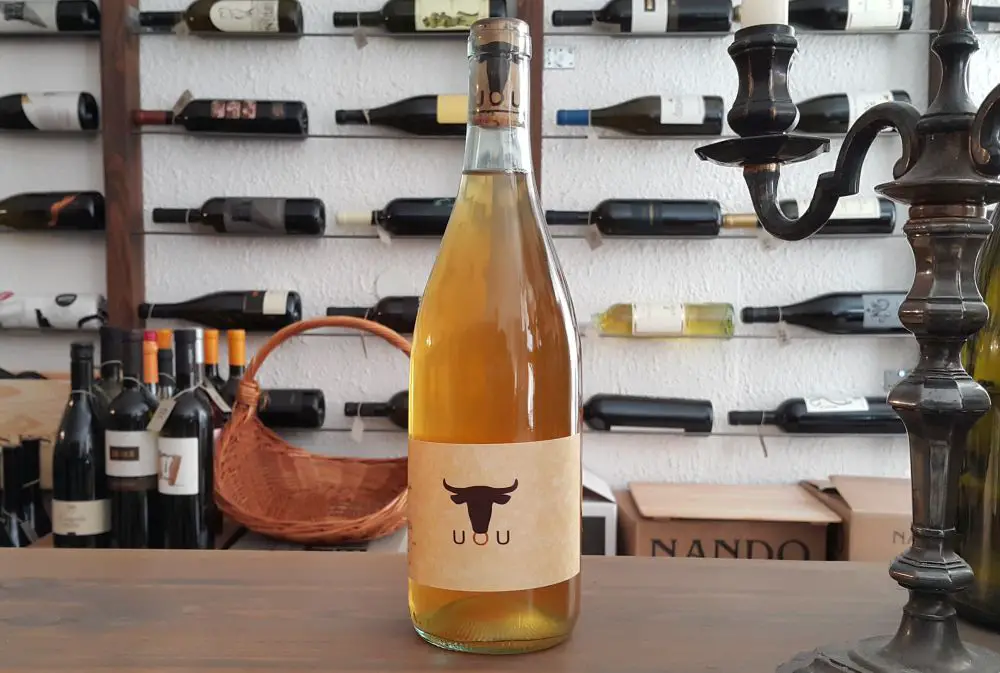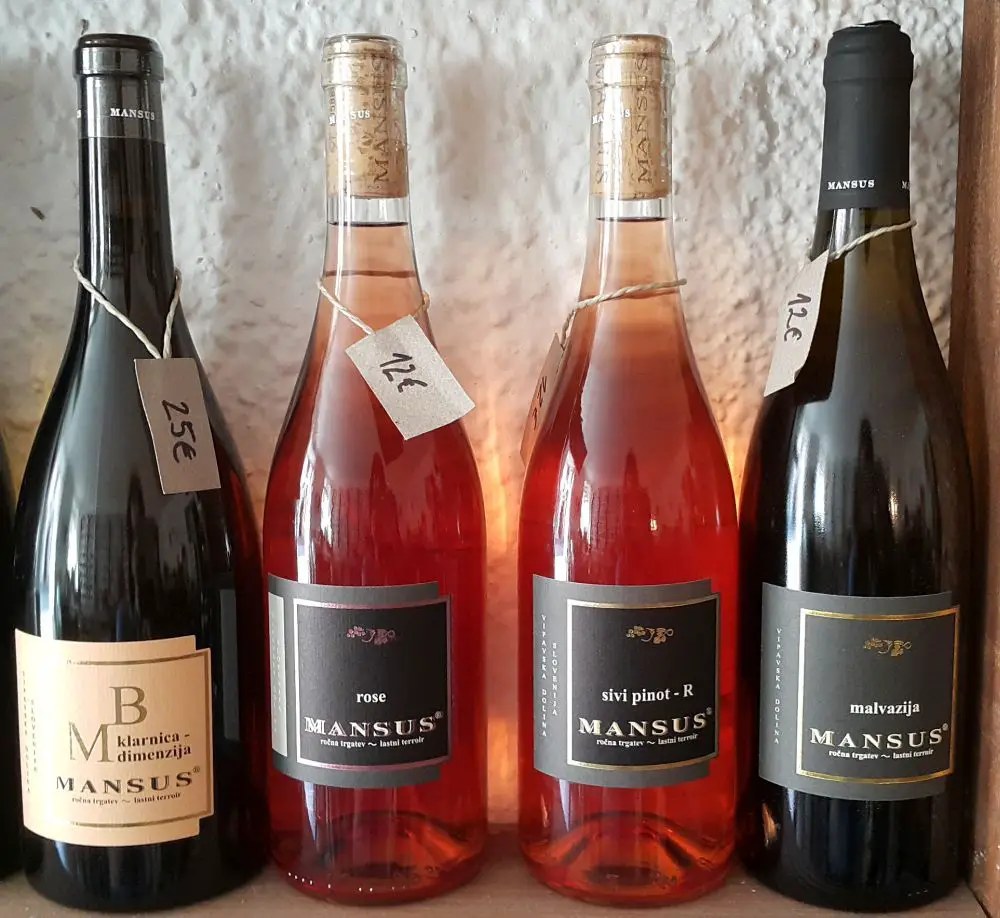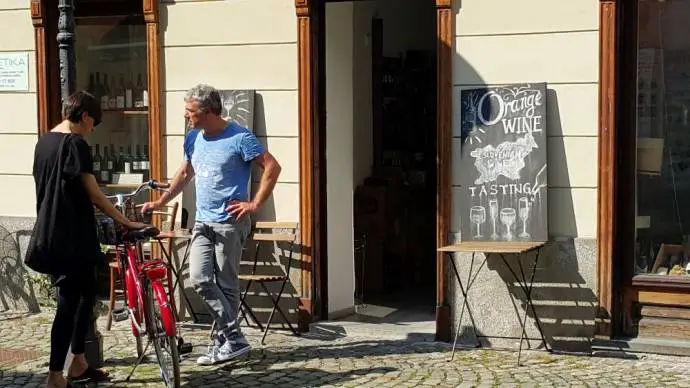September 27, 2018
Štorija is another in a line of shops with character on Trubarjeva street in Ljubljana, with its owner, himself a sommelier and wine enthusiast, actually running the place for a reason that goes beyond the ordinary money-making model often seen in the branches chain stores along the tourist promenade of Ljubljana’s downtown. In a short interview David Šinigoj explained some basic rules of wine production that result in the various kinds of wines he decided to sell in his store: orange, natural, and biodynamic.
Right at the entrance there’s a sign advertising orange wine. What's orange wine?
One can answer this question in many ways. The simplest one is to say that orange wine is wine made in traditional, pre-WWII way of making white wine.
Does that mean that there were no white wines before the WWII?
Perhaps they were some, but there were no obligations to make them. After the war they became a necessity due to consumer protection policies: long macerations (soaking of whole grapes and sometimes stems in must) were not allowed anymore, filtering and the use of sulphur became a rule. Cloudiness and an orange colour had always been indicators that the wine had gone bad. So in order to prevent any problems the authorities simply banned this kind of production and prescribed the use of chemicals and filtration.
This only happened in these lands or elsewhere as well?
Everywhere.

Rebula orange by Marinko PintarZ; UOU-consortium for the protection of abandoned vineyards
There is another way to explain what orange wine is: it’s white wine produced as if it were red. Red wines are produced from red grapes with prolonged macerations, orange wines are made of white grapes, with prolonged macerations. The opposite of the orange wine is rosé. Rosé is red wine, produced as white, and thus with shortened maceration process. This way rosés are not able to transmit tannins from grapes to wine and remain relatively impoverished wines with weak bodies.

The two bottles in the middle are rosé (on the left) while the next one (on the right) with an almost identical colour is in fact orange wine, made of Pinot gris (sivi pinot), white grapes that contain some of the blue pigment in the skin, hence the pinkish colour after the prolonged maceration process.
Orange wines are also often mistaken for natural wines. Natural wines, however, can also be ordinary white wines, as long as processes that take place in the wine cellar are all naturally generated and stopped: no yeast is added to support the fermentation process, and no sulphur is introduced to stop it. Wine is let to take its own way.
There is also a difference between eco wine and biodynamic wine. Ecological production only refers to the herbicide and pesticide use in a vineyard. With “eco” we don’t describe the processes or possible chemical use that take place in the cellar. It simply refers to the production of grapes in the vineyard, in line with the standards required for certified ecological production of grapes. “Eco” therefore doesn’t mean “natural”, as the first refers to the use of chemicals in the vineyard, while the latter refers to the use of chemicals in the wine cellar.
Biodynamic wines, however, have to do with the method of finding the right moment to pick the grapes, which involves following certain natural processes such as the moon cycles and weather changes that influence the properties of grapes and their ripening.
For example?
Mostly it is about critical temperatures, meaning, if you have very warm nights in August, this will lead to a fall in the amount of acids in grapes before they ripen. According to the biodynamic method you have to follow these parameters before you decide to pick the grapes. A non-biodynamic farmer would say, ok, acids are down, but the law allows to add so much artificially, so let’s wait till the grapes are ripe and pick them then. Or they’d say, ok acids are good, the grapes are almost ripe, we’ll pick them now and add some sugar later. But this is not by the rules of biodynamic method, where you can only use what the nature has given you. As things sometimes don’t go as wished for, it’s better here to keep acids up, since if sugars are low one can still use grapes to produce sparkling wine, as such wines demand higher acids and lower levels of alcohol, and thus lower sugars.
So when did then the orange wines come back, following their decline after WWII ?
Actually the production of orange wine never really died out. People would always make it at home. However, until the 1990s most of the grapes were sold to cooperatives, and farmers kept very little for their own wine production. I believe that all this homemade wine was produced in the old way. Perhaps the maceration time was not as extreme as some producers do it today, but it never died out. Then out of these small winemakers some, especially Slovenes in Italy such as Gravner and Radikon, decided to continue the tradition and started polishing and developing old methods, out of which this trend emerged about a decade ago. Gravner and Radikon were probably already making orange wines back in the 70s, while Terpin started in 2005. It’s a relatively new thing, considering that the first five years were spent on learning. It’s a bit easier today, though, with knowledge being more accessible and after most of the research has been done. To sum up, it’s been 10-15 years since orange wines became visible again.
Who are your customers and what do they usually buy?
My store is known for selling natural, biodynamic and orange wines, this is what people come looking for and also find here. Most of the customers are Slovenian, some of them are regular customers, and some are first timers, while most of the foreign buyers find us through TripAdvisor or Raisin, an application popular among wine enthusiasts.
So your customers already know what they are looking for?
Yes, more or less.
And accidental visitors don't often purchase in your store.
No, not at all, especially in the summer, when tourists are here. I have very few buyers among tourists, except of course those rare wine enthusiasts who find me via the websites I just mentioned. I sell too expensive wines for tourists, who are looking for 5-6 EUR wines. I don't have any of those.
How about wine tasting, the board outside says it’s possible here?
Well, this is something people seem to notice a bit more. Usually the wine tasting customers come in the evening and I open a couple of, say, white, orange and red bottles. Even some tourists stop for wine tasting from time to time. In the summer, it is usually in the evenings before I close, in winter, we usually sit inside during the day.
Are there any varieties that are especially good for orange wine production?
Every grape with thick enough peel is appropriate. That includes almost all wine varieties in Slovenia except for zelen: rebula, malvazija, pinela, klarnica, pinot gris, especially the latter works well, with its purplish colour of grapes. It’s white grapes with some blue pigment in the skin, which makes it almost indistinguishable from rosé by colour only.






